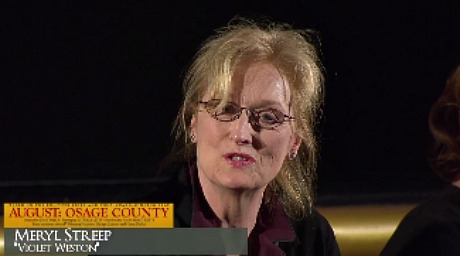An essay by A.O. Scott called “The Big Picture Strikes Back,” appearing in the 12.1 Sunday N.Y. Times Magazine, discusses evidence of “directorial presence” in the not-entirely-corporatized art form known as movies, and in so doing praises J.C. Chandor‘s All Is Lost, Alfonso Cuaron‘s Gravity and Richard Linklater‘s Before Midnight.
Near the end of the piece Scott mentions “the audacity of Gravity, with its big budget, big movie stars and huge box office, and the even greater boldness of All Is Lost, which blithely ignores some of the most basic axioms of moviemaking. The cast consists of one person, who utters a few dozen words and whose story is told with virtually no exposition. We don’t know his name, his profession, his back story or anything else. Nothing has been done to make him relatable or representative or universal, even as he becomes all of those things.


